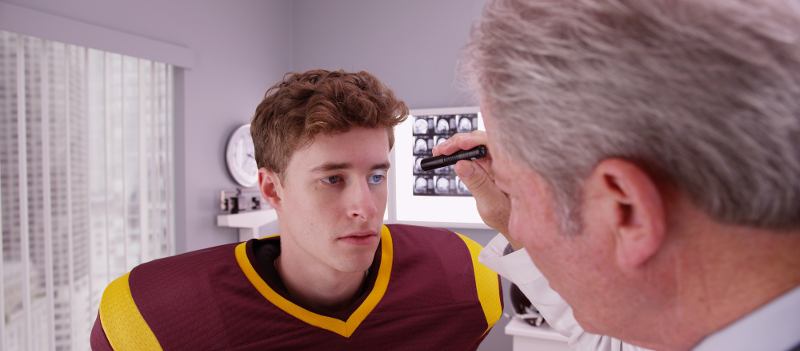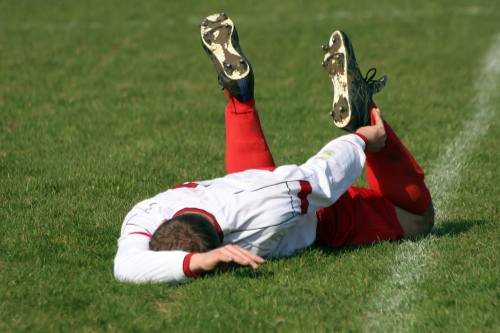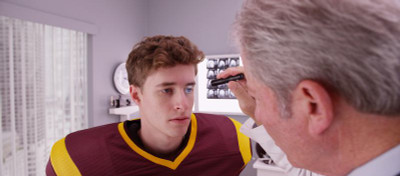 6th Apr 2017
6th Apr 2017
Treating Common Sports Injuries With Physical Therapy
Traumatic brain injuries suffered during athletic sports have become a common headline in the news. It is estimated that there are 300,000 sports-related traumatic brain injuries (TBI) which can vary in severity from mild to severe, with TBI’s being the leading cause of death in sports-related injuries. TBI’s have shined a light on the potential dangers of playing sports, from childhood athletic programs to professional sports teams. Contact sports such as football can be expected to result in a higher number of these traumatic injuries than a non contact sport such as swimming. The reason is the risk of collisions in contact sports is much higher because there is forceful contact not only with other players, but with the ground and other possible objects, such as goal posts, pucks, etc. which can result in traumatic injuries.

However, all sports carry injury risks because of the physical toll on the body through physical contact, collisions and excessive exertion in training, practice and active play.
The Most Common (Both Traumatic & Overuse) Sports Injuries Are:
- Head, neck and back – Concussion-which can lead to migraines and memory loss, slipped disc, stress fracture, nerve damage, whiplash, facial injuries and lacerations
- Arms – Bruises, dislocation of shoulders and fingers, tendonitis, sprained wrist, rotator cuff tear, bursitis, and fracture
- Legs – Shin splints, sprained or strained ankle, ACL/MCL/PCL sprain or tear, pulled groin, pulled hamstring, fracture
Nearly 2 million people suffer sports-related injuries and require emergency room treatment annually. Put another way, sports-related injuries make up 20% of all injuries seen in an emergency room.
The Most Common Sports Injuries Broken Down by Sport
Basketball
- Sprains and fractures of ankles and knees
- Facial injuries
- Dislocated Fingers
Cycling
- Head injuries (concussions and fractures)
- Shoulder fractures or dislocations
Soccer
- Sprains and fractures of knees and ankles
- Dislocated fingers and shoulders
- Facial injuries
Football & Rugby
- Broken or dislocated fingers
- Dislocated shoulders
- Dislocated knees
- Traumatic head injuries
Baseball & Softball
- Fractured and sprained ankles
- Fractured and sprained knees
- Facial injuries
Hockey
- Broken or dislocated fingers
- Dislocated shoulders
- Dislocated knees
- Traumatic head injuries
Boxing
- Broken nose
- Broken jaw
- Facial injuries and lacerations
- Traumatic head injuries
Injuries aren’t limited to adults and professional athletes. It is estimated 3.5 million children ages 14 and younger get hurt annually playing sports. And while traumatic injury is less of a risk in adolescent sports, brain injury remains the number one cause of death in children’s sports-related injuries. Statistically, almost 50% of head and brain injuries sustained by children in sports or recreational activities occur while participating in bicycling, skateboarding, or skating.
Related Article: Treating the Top 10 Most Common Sports Injuries
Treating Sports Injuries

Treatment of sports injuries are immediately treated with Rest-Ice-Compression-Elevation. When a sports injury requires rehabilitation, physical and occupational therapy along with chiropractic will work to help an athlete reduce pain and return to optimal function in sports activities.
Physical Therapy Modalities for Sports Injuries
- Cold Compression Therapy: Cold compression therapy devices combine the analgesic effects of ice along with the swelling reduction benefits of compression. With the multiple wraps available, cold compression devices are able to treat most areas of the body.
- Electrical Stimulation: E-stim machines can help strengthen and re-educate injured muscles while also improve circulation and decrease swelling in the injured area.
- Therapeutic Ultrasound: Ultrasound is useful to treat deeper muscle injuries as well as those closer to the skin’s surface. Ultrasound machines help increase local blood flow, relax tissues and facilitate the healing of scar tissue.
- Therapeutic Exercise: From the use of underwater treadmills to functional exercise, physical therapists will work with injured athletes to return to full strength and pain-free function.
- Whirlpool Therapy: Hydrotherapy delivered with a therapeutic whirlpool is extremely beneficial and often is included in most sports-therapy rehabilitation programs because of its ability to relax stiff and painful muscles while reducing pain without adding stress on the body’s joints.
Other treatments for sports injuries include:
- Nonsteroidal Anti-Inflammatory Drugs (NSAIDs): Nonsteroidal anti-inflammatory drug (NSAID) such as aspirin or ibuprofen, can reduce swelling and pain. Another common drug is acetaminophen, which can help reduce pain but it will not reduce swelling. Topical Analgesics are also an effective and non invasive way to treat chronic pain.
- ImmobilizationImmobilization (restricting movement of the injured limb): is a common treatment for sports injuries. Prevention of movement to the injured limb is in order to avoid more damage to the area. Some devices used to immobilize sports injuries are: slings, splints, casts, and leg immobilizers.
- Surgery: While most rehabilitation looks to prevent the need for surgery, in some cases, surgical intervention is needed to fix sports injuries. Surgery can fix torn tendons and ligaments or put broken bones back in place.
- Rest: Athletes, particularly professional athletes, dread down-time. However, time to rest after an injury is a necessity. Rest initiates and helps speed up the healing process. A good rehabilitation program will balance both rest and rehabilitative treatment.
A traumatic injury can mean the loss of function in daily activities in addition to loss of a livelihood for professional athletes. Prevention in the form of adequate training, protective gear and safety protocols are a must in all athletic programs from adolescent to professional.
When an athlete sustains a traumatic injury, it’s essential they seek and receive rehabilitative treatment that not only returns them to function but provides education on prevention in order to avoid reoccurrence or more debilitating injury. It is important and necessary that the spotlight is shone on traumatic injuries in sports. In order for athletes to continue to compete, more work needs to be done to ensure how to achieve optimal performance but not at the cost of personal health.
More Articles Related to "Sports Injuries:
- Sports Injuries and Flexibility
- Popular Treatments for Sports Injuries
- 5 Common Crossfit Injuries Treated with Physical Therapy






